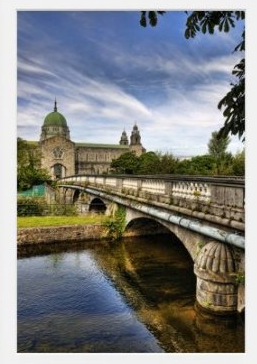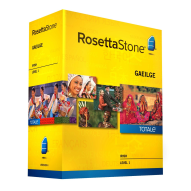Galway City, Ireland
Galway City, Ireland, in County Galway, is known as the gateway to Europe. It is situated on the western most part of the coast of Ireland, with the Aran Islands located at the mouth of Galway Bay. It is also the third largest city in Ireland and the Capital of the Province of Connacht. Originally a small fishing village, its first settlers arrived approximately 10,000 years ago. Archeological digs have uncovered cooking areas on the coastal outskirts of the city. An axe head from the Paleolithic period was unearthed on the Aran Islands, dating over 300,000 years old, but it is not known how it arrived there.
When the Anglo Normans invaded in 1235, they captured the fort of the Galway chieftains and constructed a castle from which a medieval settlement grew. Starting in 1270, a wall was built around the city and it progressed into an important merchant city. This was possible because of 14 merchant families who became known as the 14 Tribes of Galway. Galway City was chartered by King Richard III in 1484 and has been a thriving commercial and trade center on the west coast of Ireland ever since.
This busy port city was once home to the Spanish Armada during the days when the conquistadors were exploring the world. Large ships bound for the 'the new world' set sail from Galway. The city was well known for its part in the wine business, especially Spanish wines. The Spanish influence is found in an area of the city called the Spanish Arch. The arch stands at the far side of the city by the river. It is one of the most photographed and famous buildings in Galway. The Spanish Arch was erected as a continuance to the city walls around 1584. It was used for shelter to unload boats out of the sight of thieves.
Galway was a well built city during the first half of the 17th century. There were two sieges, by Oliver Cromwell and William of Orange, resulting in the fall of the city. The Tribes went into exile and, after a half-hearted attempt in the 1960's, there has been no major revitalization of the city until recently.
Today, Galway City is known for its love of the arts and culture. Eyre Square is the focal point of the town and is always crowded with a variety of people walking, relaxing or just hanging out. In the past it has serviced more important events, such as a speech given by President John F. Kennedy a few months prior to his death. The square was renamed Kennedy Memorial Park but the locals still call it Eyre Square.
Galway City is also the home of the National University of Galway, Ireland, formerly the University College, Galway or UCG. It was established as one of the Queens' Colleges in Ireland in 1845 but it officially opened in 1849. The oldest and loveliest area of the college is called the Quadrangle, where the old library and lecture halls are located. The newer buildings were added at different intervals and were designed to blend in with the old. Galway University is also found here, with about 12,000 students attending the University and Technical College.
Today, local fishing fleets are housed in the harbor, just as they were hundreds of years into the past. Galway City's major industry is advanced technology in the computer field, among other clean industries like medical supplies. The city is also home of the world renowned Macnas Street Theater, as well as The Druid Theater and An Taibhdhearc (fairy vision), which performs in the Irish language. Gaelic is spoken widely in the city and county and it is the native language in Connemara.
Galway City plays host to many festivals, including the Arts festival in July, the Galway Festival Race Meeting at the end of July, and the Oyster Festivals in September and October. During the summer months, people visit the city from all over the world. The Irish are friendly and hospitable by nature, so the visitors are greeted with a smile. Musicians are found on nearly every street corner with a myriad of instruments like the harp, accordion, guitar, fiddle or tin whistle. It is rare to find a pub with no music session going on and the Irish love to share it with all who will listen.
Disclaimer: LittleShamrocks.com is an affiliate website that receives commissions from sales of the products listed. We have purchased and sampled many, but not all, of the products on these pages.
© Copyright LittleShamrocks.com. All Rights Reserved.




